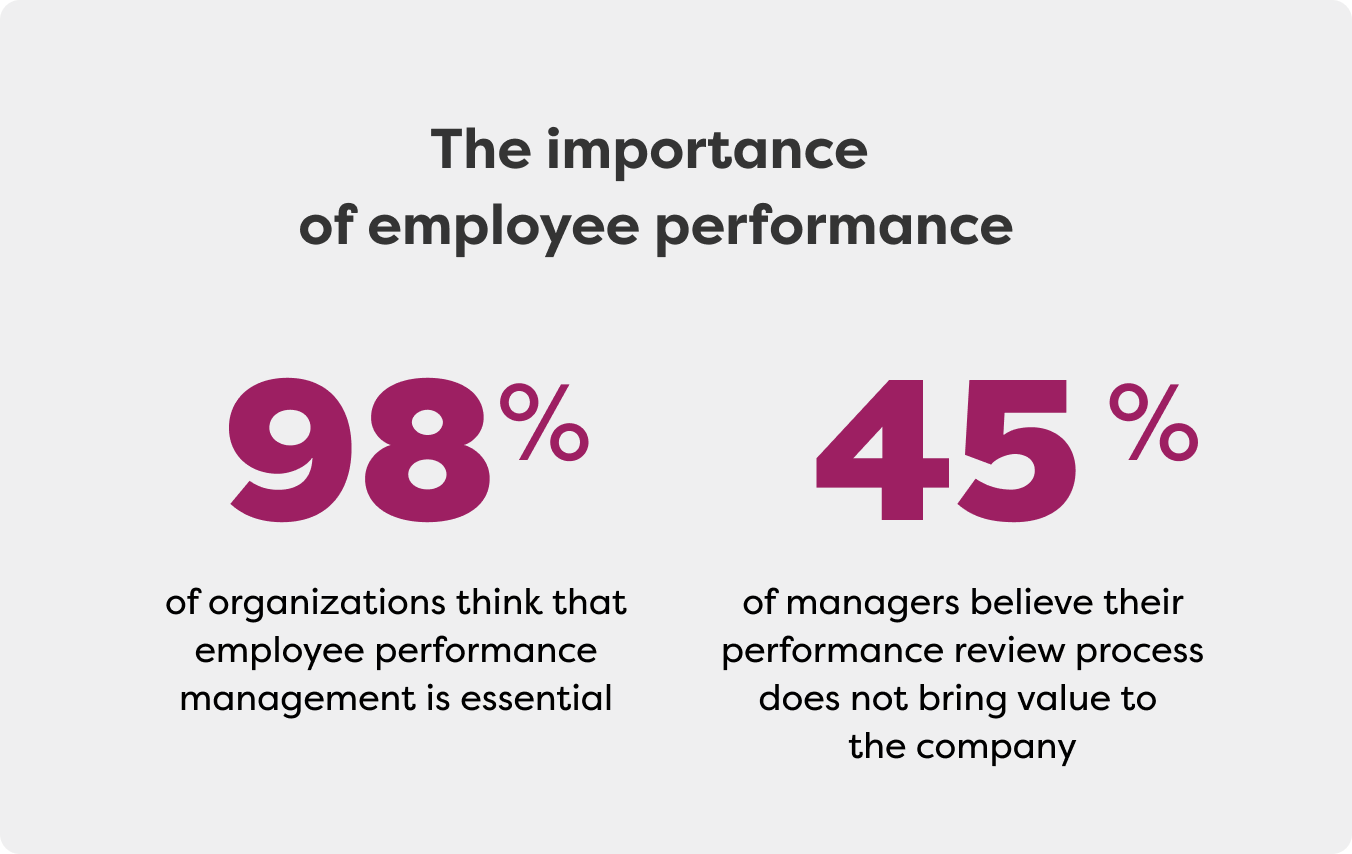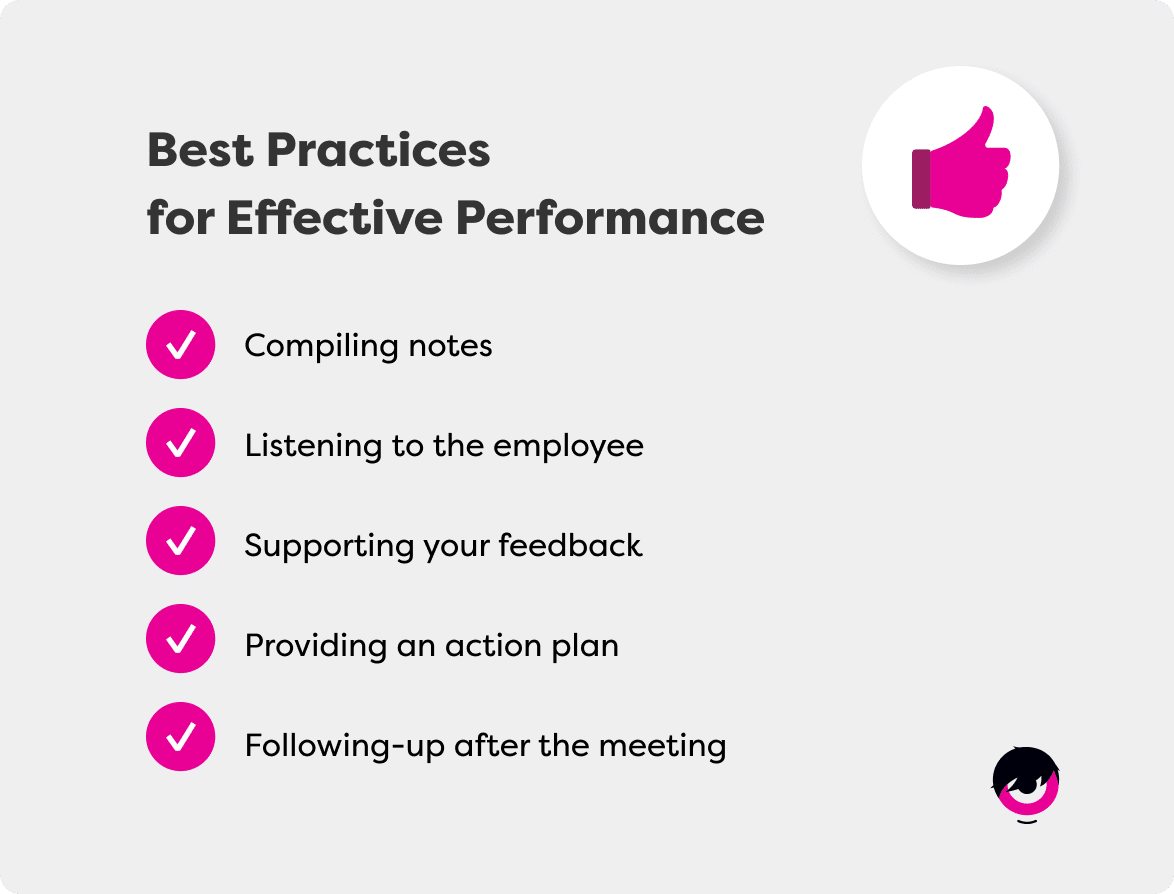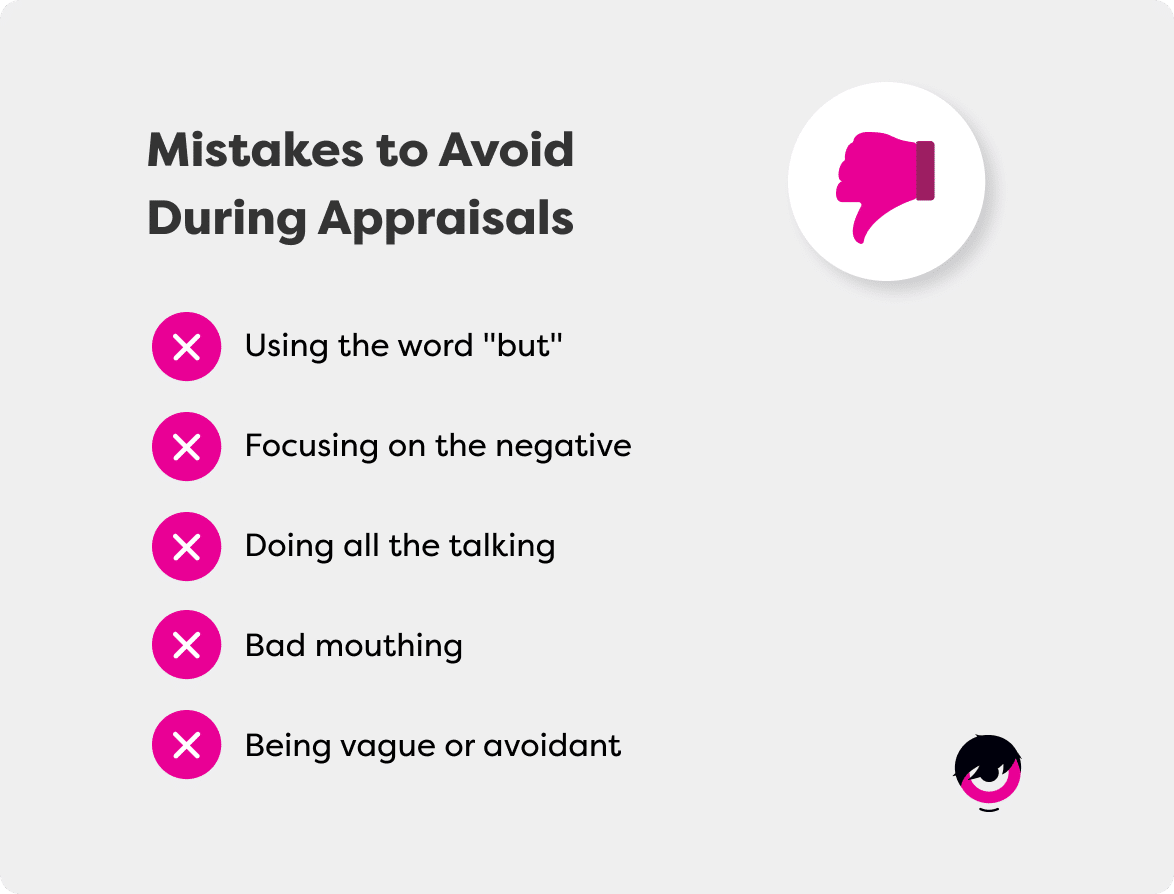Performance review phrases sorted by strengths and weaknesses will help you guide the discussion. Your words should be clear and factual and your attitude thoughtful and open. Having a list of points you want to discuss beforehand will be a great help. For instance, you can comment on teamwork and social skills by underlining participation in team meetings, willingness to help colleagues, or on the contrary, lack of participation and interest in team activities. Here are a few useful examples:
Strengths
“Positive attitude and outlook that benefits the entire team.”
“Ability to work on different tasks effectively.”
“Contributes to business growth and teamwork.”
“Is willing to offer help and share ideas with team members.”
“Is always on time and ready to work.”
Weaknesses
“Is easily discouraged by new challenges and lacks motivation to overcome them.”
“Lack of creative thinking that negatively impacts productivity.”
“Does not meet or barely meets expectations.”
“Never participates in team building activities or team meetings.”
“Inability to meet deadlines and stick to the schedule.”
Click here for more examples of performance review phrases to help you find the right words!


















